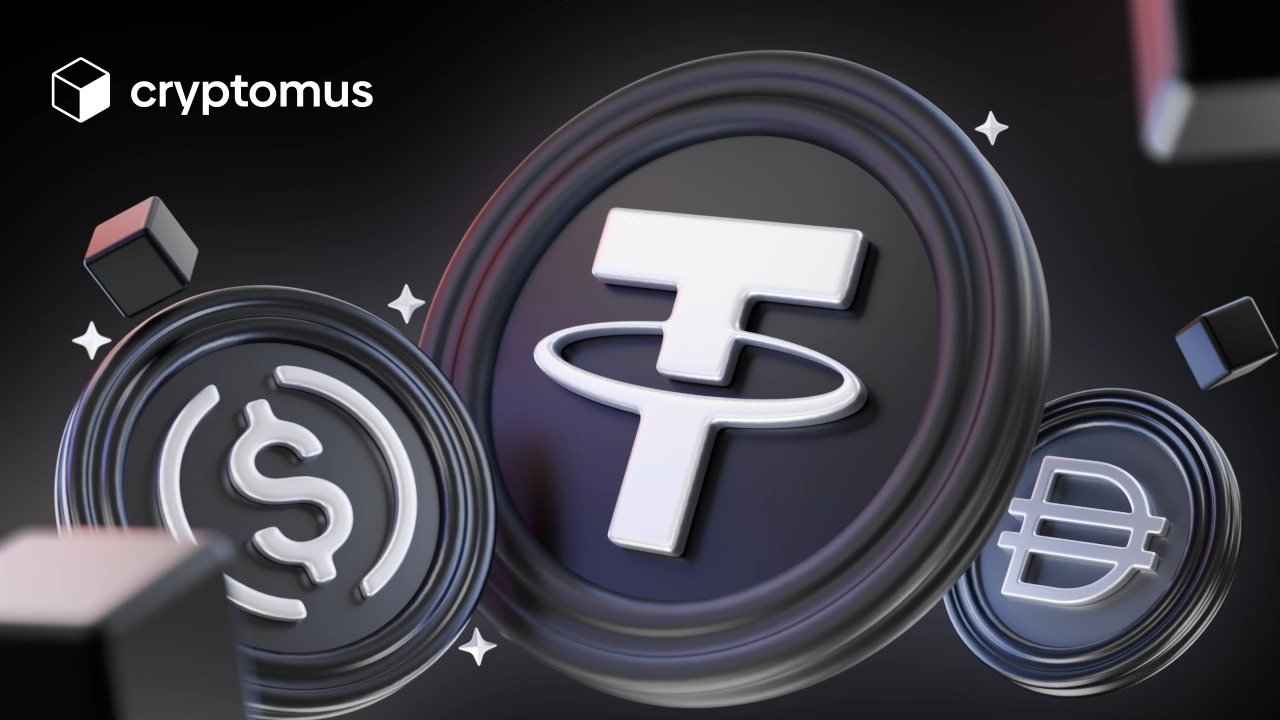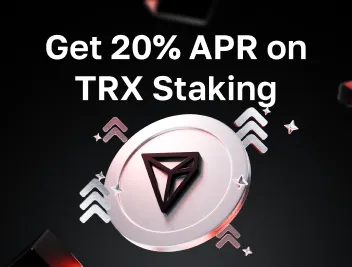
What Is A Stablecoin And How Does It Work
In the dynamic realm of cryptocurrency, stablecoins have swiftly become an essential link between the world of traditional finance and the innovative landscape of digital assets. Imagine a cryptocurrency that retains its value, offering the benefits of blockchain technology without the volatility. This is where stablecoins shine.
Designed to provide a dependable and stable value, they have captured the attention of investors, traders, and everyday users alike. In this article, we will explore the concept of stablecoins, uncovering what they are and how they seamlessly integrate into the ever-evolving financial ecosystem.
What Are Stablecoins?
Stablecoins are digital currencies tethered to stable assets, such as fiat currencies (like the US dollar) or commodities (like gold). Unlike traditional cryptocurrencies, which can swing dramatically in value, stablecoins strive to maintain a consistent price, making them more practical for daily transactions and serving as a reliable store of value. For example, Tether (USDT) is one of the most widely used fiat-collateralized stablecoins, pegged to the US dollar at a 1:1 ratio, allowing users to transact with a sense of security in its value.
These digital currencies bridge the gap between conventional financial systems and the world of digital currencies, providing a more stable alternative for users. Stablecoins find utility in various areas, from trading and remittances to facilitating transactions across diverse platforms.
How Do Stablecoins Work?
Stablecoins maintain a steady value using mechanisms like reserve backing and automatic supply adjustments. Most stablecoins are backed by real-world assets, such as US dollars held in reserve. This means each stablecoin can be redeemed for an equivalent amount of traditional currency, keeping its value stable. For example, Tether (USDT) and USD Coin (USDC) are both pegged to the US dollar, with each token valued at $1.
Some stablecoins use "smart contracts"—programs that automatically monitor prices and adjust the supply of coins. When demand for the stablecoin rises and its price starts to increase, the system issues more coins. If demand drops, they are removed from circulation to maintain a stable price. These mechanisms help stablecoins stay consistent in value, making them practical for transactions and exchanges like regular money.
Types Of Stablecoins
Stablecoins come in various forms, each designed to maintain their peg through different methods—collateralization or algorithmic control.
Firstly, digital assets maintain their value through collateralization, which involves backing each token with real assets such as fiat currency, cryptocurrencies, or commodities, providing a tangible guarantee of worth. Alternatively, algorithmic control adjusts the supply of stablecoins dynamically based on market demand, automatically minting or removing coins to keep the price stable without relying on collateral. Here’s a look at the main types of stablecoins separately:
Fiat-Collateralized
Fiat-collateralized stablecoins are backed by traditional currencies like the US dollar or euro, held in reserve by a bank or trusted institution. Each coin represents a specific amount of fiat currency, offering a straightforward approach to stability. Examples include Tether (USDT) and USD Coin (USDC), where each token is backed 1:1 with real dollars in reserve.
Crypto-Collateralized
These stablecoins are backed by other cryptocurrencies rather than fiat. To address the volatility of the crypto market, they are often over-collateralized, meaning more cryptocurrency is held as collateral than the stablecoin’s face value. DAI, for instance, is backed by Ethereum (ETH) and uses smart contracts to automatically manage collateral levels and maintain its peg to the US dollar.
Commodity-Backed
Commodity-backed stablecoins are pegged to physical assets like gold, oil, or other valuable commodities. Each token represents a certain amount of the underlying asset, providing a stable value based on the commodity’s worth. Examples include Paxos Gold (PAXG) and Tether Gold (XAUT), which are backed by physical gold reserves.
Algorithmic (Non-Collateralized)
Algorithmic (non-collateralized) stablecoins use supply and demand algorithms rather than collateral to maintain stability. When the price of the stablecoin rises above its target value, the algorithm increases the supply by minting new coins, which helps to lower the price back to the peg. Conversely, if the price falls below the target, the algorithm reduces the supply by buying back and burning tokens, which helps to increase the price.
By effectively managing the supply, algorithmic stablecoins aim to achieve price stability without the need for collateral backing, though they can be more experimental and can be volatile.

Most Popular Stablecoins
Stablecoins have gained significant traction in the cryptocurrency market, with several options becoming widely adopted. Here are some of the most popular stablecoins:
- Tether (USDT): One of the first and most widely used stablecoins, USDT is pegged to the US dollar and is commonly used for daily transactions like payments and as a medium of exchange.
- USD Coin (USDC): A fully-backed stablecoin by Circle and Coinbase, USDC is also pegged to the US dollar and is known for its transparency and regular audits.
- Binance USD (BUSD): Issued by Binance in partnership with Paxos, BUSD is a regulated stablecoin backed by US dollars, providing a reliable option for trading on the Binance exchange.
- Dai (DAI): A decentralized stablecoin created by MakerDAO, Dai is backed by various cryptocurrencies and is designed to maintain a stable value through smart contracts.
- FDUSD (First Digital USD) is a stablecoin pegged to the US dollar, fully backed by dollar reserves for stability. FDUSD facilitates transactions and access to decentralized finance (DeFi) platforms.
- TrueUSD (TUSD): A fiat-collateralized stablecoin that is fully backed by US dollars, TUSD offers a transparent and regulated option for users.
- Pax Dollar (USDP): Previously known as Paxos Standard, this stablecoin is also pegged to the US dollar and backed by US dollar reserves, offering users a reliable means of transactions.
- HUSD: A stablecoin issued by Stable Universal, HUSD is pegged to the US dollar and backed by reserves of fiat currency, making it a popular choice among businesses.
Pros And Cons Of Stablecoins
As stablecoins continue to gain popularity in the cryptocurrency landscape, understanding their advantages and disadvantages is crucial for users and investors alike. In this section, we will explore the pros and cons of stablecoins to help you navigate their potential benefits and drawbacks.
Pros of Stablecoins:
- Price Stability: Stablecoins are designed to maintain a consistent value, making them a reliable medium of exchange and store of value compared to volatile cryptocurrencies like Bitcoin or Ethereum.
- Liquidity: Many stablecoins are widely traded and easily convertible to other cryptocurrencies or fiat currencies, providing high liquidity for users.
- Accessibility: Stablecoins enable users to participate in the cryptocurrency market without being exposed to its inherent volatility, making them an attractive option for both newcomers and businesses.
- Transaction Efficiency: Stablecoins facilitate fast and low-cost transactions, especially for cross-border payments, reducing reliance on traditional banking systems.
- Integration with DeFi: Stablecoins play a crucial role in decentralized finance (DeFi) platforms, allowing users to lend, borrow, and earn interest on their holdings in a stable asset.
Cons of Stablecoins:
- Centralization: Many stablecoins, particularly fiat-collateralized ones, rely on centralized issuers, which can raise concerns about trust, regulatory compliance, and transparency.
- Counterparty Risk: Users must trust that the issuer maintains adequate reserves and follows transparent practices, which can vary among different stablecoins, posing potential risks.
- Limited Growth Potential: While stablecoins provide stability, they do not offer the same potential for appreciation as other cryptocurrencies, limiting investment opportunities.
- Regulatory Scrutiny: As stablecoins become more popular, they face increasing regulatory scrutiny, which could impact their use cases and adoption in the future.
- Market Manipulation Risks: Some stablecoins may be susceptible to market manipulation, especially those without robust governance and transparency, which can affect their peg and reliability.
How To Buy A Stablecoin?
Purchasing stablecoins is an easy process that allows you to integrate these digital assets into your cryptocurrency portfolio. Here’s a step-by-step guide to help you get started:
- Choose a Cryptocurrency Exchange: Select a reputable exchange that supports the stablecoin you want to buy. For example, you can use platform like Cryptomus, where you can buy stablecoins directly from other users, often with lower fees and more payment options.
- Create an Account: Sign up for an account on your chosen exchange or P2P platform. This process usually requires providing your email address and creating a password. You may also need to complete identity verification, which can involve submitting personal information and documents.
- Deposit Funds: Fund your account by depositing fiat currency (such as USD, EUR, etc.) or other cryptocurrencies. Most exchanges and P2P ones offer various funding methods, including bank transfers, credit card payments, and crypto deposits.
- Select the Stablecoin: Navigate to the trading section of the exchange or P2P platform, find the stablecoin you wish to purchase (like USDT, USDC, or DAI), and select it.
- Place an Order: Decide how many stablecoins you want to buy and enter the amount in the trading interface. You can choose between a market order (buying at the current price) or a limit order (setting a specific price at which you want to buy).
- Confirm the Purchase: Review your order details and confirm the transaction. Once your purchase is complete, the stablecoins will be credited to your exchange wallet or transferred directly to your wallet if using a P2P platform.
- Store Your Stablecoins: After buying, you can keep your stablecoins on the exchange or P2P wallet for easy access or transfer them to another secure wallet (hardware or software) for better protection against hacks or exchange failures.
FAQ
Is Bitcoin A Stablecoin?
No, Bitcoin is not a stablecoin. Bitcoin is a decentralized cryptocurrency known for its high volatility, with prices that can fluctuate dramatically over short periods. Unlike stablecoins, which are designed to maintain a stable value by being pegged to fiat currencies or other assets, Bitcoin's value is determined by market demand and supply dynamics. This volatility can make Bitcoin less suitable for everyday transactions and as a stable store of value.
What Is A Decentralized Stablecoin?
A decentralized stablecoin is a type of stablecoin that operates without a central authority or issuer, relying on blockchain technology and smart contracts to maintain its value. Unlike traditional stablecoins, which are typically backed by fiat currency reserves held by a central entity, decentralized stablecoins use a system of algorithms and collateralization to stabilize their price.
For instance, a decentralized stablecoin may require users to lock up a larger value of cryptocurrency as collateral to mint it, creating a buffer against price fluctuations. This approach allows the stablecoin to maintain its peg through decentralized governance and market dynamics. Examples include DAI, which uses over-collateralization and smart contracts to ensure price stability while promoting transparency and user control in the cryptocurrency ecosystem.
How Do Stablecoins Make Money?
Stablecoins generate revenue primarily through the management of their underlying assets. Issuers often hold reserves in low-risk investments, such as government bonds or treasury bills, which earn interest. This interest income helps the issuers maintain the liquidity necessary for users to redeem their coins while also covering operational costs. For example, Tether (USDT) maintains a significant portion of its reserves in cash equivalents, allowing it to earn interest while ensuring stability and reliability.
In addition to earning interest from reserves, stablecoin platforms frequently offer lending and yield farming opportunities. Users can deposit their stablecoins into these platforms, which then lend the assets to borrowers at a higher interest rate. The difference between what borrowers pay and what depositors earn becomes a source of profit for the platform. Furthermore, decentralized finance (DeFi) protocols often incentivize users to stake their stablecoins in liquidity pools, contributing to liquidity in the market while generating rewards for participants. This multi-faceted approach not only supports the stablecoin ecosystem but also enhances overall market stability.
How Many Stablecoins Are There?
As of October 2024, the stablecoin market has experienced significant fluctuations but remains robust, currently valued at approximately $161.2 billion. This figure indicates a recovery from a dip following the collapse of Terra's UST in 2022, with stablecoins now representing 8.2% of the total cryptocurrency market cap.
The major players in this market are Tether (USDT), USD Coin (USDC), and Dai (DAI), which together control about 94% of the stablecoin market. Specifically, USDT alone holds a dominant share of approximately 70.9%. In total, there are roughly 8.7 million addresses actively holding stablecoins.
Are Stablecoins Good As A Saving Account?
Stablecoins can be an attractive alternative to traditional savings accounts, particularly for those seeking higher returns on their deposits. Many platforms, including decentralized finance (DeFi) applications and centralized exchanges, offer interest rates on stablecoin deposits that often exceed those offered by conventional banks, reaching between 5% and 15% annually. This potential for significant earnings, combined with the stability of being pegged to fiat currencies, makes stablecoins a compelling option for individuals looking to grow their savings while maintaining easy access to their funds.
However, there are important risks to consider. The regulatory environment surrounding stablecoins is still evolving, which could affect their future use and stability. Additionally, users must ensure they are interacting with reputable platforms to avoid potential losses due to hacks or fraud. While stablecoins provide benefits such as volatility protection and liquidity, it is crucial to weigh these advantages against the associated risks and conduct thorough research before investing.
In conclusion, stablecoins play a vital role in the evolving cryptocurrency landscape, offering a bridge between traditional finance and the digital assets’ world. Their ability to maintain a stable value makes them a practical option for various applications, including trading, payments, remittances, and even savings. As the market continues to mature, stablecoins not only provide a reliable medium of exchange but also represent opportunities for earning interest and participating in decentralized finance.
Thank you for reading! We hope this article has given you valuable insights into stablecoins’ entities and their significance in today's financial ecosystem. If you have any further questions or comments, feel free to share!
Rate the article








comments
0
You must be logged in to post a comment